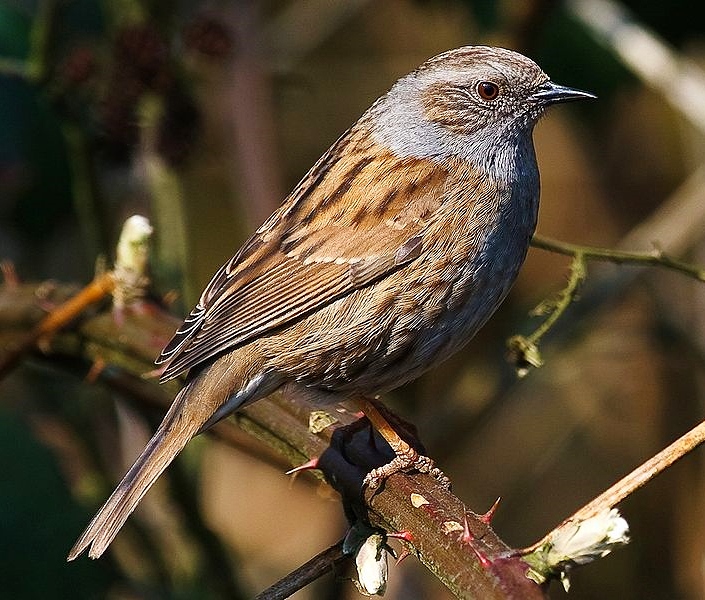 |
| (Photo from Wikipedia) |
Common name:
dunnock (en); ferreirinha-comum (pt); accenteur mouchet (fr); acentor común (es); heckenbraunelle (de)
Taxonomy:
Order Passeriformes
Family Prunellidae
Range:
This species is found throughout Europe and also in eastern Turkey, the Caucasus and northern Iran. The more northern and north.eastern population migrate south to winter along the southern parts of the breeding range as well as in northern Morocco, Tunisia, Lybia and Egypt and in some areas in the Middle East.
Size:
Dunnocks are 13-15 cm long and have a wingspan of 19-21 cm. They weigh 16-25 g.
Habitat:
They are found in a wide range of habitats, including temperate and boreal forests, scrublands, agricultural areas and pastures and also in parks and gardens within urban areas.
Diet:
These birds forage on the ground, taking on various adult and larval insects, spiders and some seeds, especially during winter.
Breeding:
Dunnocks breed in April- June. They can be monogamous but also polygynous, polyandrous or polygynandrous. The nest is built by the females, consisting of a cup made of twigs, moss, dry leaves, rootlets and varied pieces of plants, which is lined with moss, fur and feathers and typically placed 1-2 m above the ground. Each female lays 4-6 turquoise coloured eggs, but the clutch size can be larger in nested with more than one female. The eggs are incubated for 12-15 days and only females incubate. The chicks are fed by both sexes and fledge 11-12 days after hatching, but continue to receive food from parents for another 2 weeks.
Conservation:
IUCN status – LC (Least Concern)
This species has a very large breeding range and the population in Europe, which represents over 95% of their range, is estimated at 36-78 million individuals. The population is suspected to be stable in the absence of evidence for any declines or substantial threats.







